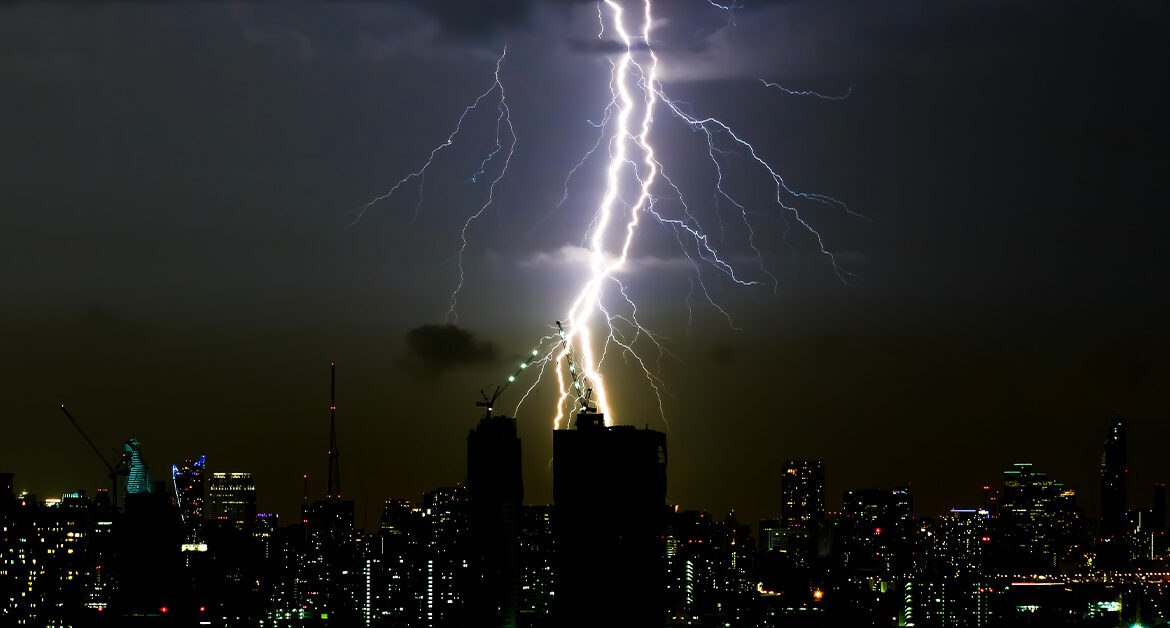The Atmospheric Discharge Protection System (SPDA), popularly known as lightning rods, is essential in electrical safety engineering.
After all, it is designed to minimize damage caused by atmospheric electrical discharges (or lightning), which pose a constant threat to electrical structures and systems.
This system consists of metal rods installed on top of buildings and structures. They attract lightning and direct its electrical charge safely to the ground.
In this way, the SPDA is capable of preventing potential fires, electrical damage and risks to human life.
Want to learn more about this topic? Stay tuned!
Learn about the history of SPDA
SPDA was invented in 1752 by Benjamin Franklin (American scientist and politician).
While flying a kite with metal wire, he observed lightning bolts coming down the wire, proving his theory about atmospheric electrical discharges.
Franklin connected metal rods to the ground as conductors, demonstrating the effectiveness of lightning rods in attracting lightning and preventing electrical damage to buildings.
Thus, this device became an essential safeguard against lightning strikes. Indeed, it was one of Franklin's most notable contributions.
When to use a Lightning Protection System?
Learn about some occasions when it is necessary to install an SPDA.
- Structures exposed to risks: any building, industrial facility, antenna or tall pole that is subject to atmospheric electrical discharges;
- Areas with high incidence of storms: in geographic regions with frequent thunderstorm and lightning activity
- Locations with sensitive equipment: hospitals, data centers and other facilities with sensitive equipment;
- Establishments with installed power greater than 75KW: they are required by regulatory standard NR10 to maintain an Electrical Installation Record (PIE) — which includes inspection reports of the SPDA system and electrical grounding;
- Height and built area: buildings with a height greater than 30 meters and industrial/commercial facilities with more than 1500 m² must follow the Fire Department's SPDA requirements;
- Areas with explosives and flammable materials: places intended for the storage of explosives and flammable materials require an SPDA to prevent the risk of fire and explosions;
- Hazardous environments (such as gas stations): SPDA system safety is essential in hazardous environments to prevent fires and explosions.
What are the 3 types of SPDA?
There are 3 types of SPDA. Learn more.
1. Faraday Cage Method
This method employs a mesh of interconnected horizontal conductors, forming a cage. The cables in the structure act as receivers of electrical discharges, based on Faraday's theory. Thus, it is commonly used to protect warehouses and industrial buildings.
2. Franklin's Method
It uses Franklin-type lightning rods, positioned to protect a volume cone with the arrester at the apex. However, it has height and protection limitations, making it more suitable for small buildings. Due to these limitations, its use has declined in larger buildings.
3. Rolling Ball Method
The latter is the most recent method, involving rolling a sphere along the building. The points where the sphere touches the structure are most vulnerable to lightning strikes, requiring protection with metal elements (such as lightning rods or conductors).
Did you enjoy learning more about the subject?
Did you know that Trifásica Elétrica offers reliable SPDA? We also serve all regions of Brazil.
Contact our team of experts now and find out which SPDA is best for your needs.
Contact our sales team on one of our channels.Follow our social media: Facebook, Instagram, LinkedIn and YouTube.


[…] to implement a Lightning Protection System (LPS), it is essential to have an appropriate project. This project must be developed by a […]